Yesterday during church service there was a small boy about two rows in front of me. He was very clean cut with a summer bur haircut. This little boy was not aware of it, but he was sending me a message that would come to occupy my thoughts from then until now. The message he was sending proved to be a distraction from the sermon which I was enjoying. I tried to put the message out of my head through the rest of the service, but it kept creeping back into my mind. I tried to think of other thoughts at our fellowship meal, but the message returned again and again. The message continued to occupy my mind and when I awoke this morning, it was as fresh as ever. Finally realizing that maybe I needed to share the message, I grabbed my camera, and well, here we are. So what is the message?
If you are a mathematician, here is the message: F(n) = F(n-1) + F(n-2).
I am not a mathematician. I prefer to keep the alphabet separate from numbers. If you are like me, then the following explanation may be more interesting to you.
We will start with the numbers 0 and 1.
If we add these two numbers together, our equation will look like this: 0+1=1.
We want to focus on the last two numbers in our equation. 0+1=1
The last two numbers in our equation are 1 and 1. The next step is to add these two numbers together. 1+1=2
Now we want to focus on the last two numbers in this new equation. 1+1=2
The last two numbers in this new equation are 1 and 2. The next step is to add these two numbers together. 1+2=3
As before, we want to focus on the last two numbers in this new equation. 1+2=3
The last two numbers in this new equation are 2 and 3. As before, the next step is to add these two numbers together. 2+3=5
As you can see, we have developed a simple pattern. We started with 0 and 1. We wrote an equation which added the two numbers together, then we identified the last two numbers in our equation and wrote a new equation using those two numbers. Then we repeated the process.
We will repeat this process only one more time here, but we could continue this process forever, and soon we would be dealing with very large numbers. Our last equation was 2+3=5.
As before, we want to focus on the last two numbers in this equation. 2+3=5
The last two numbers in this new equation are 3 and 5. Finally, we add these two numbers together. 3+5=8
Try it on your own. The first equation is listed. Identify the last two numbers in the equation and fill in the blanks with the new equation, then click "Check My Answer." Play for as long as you like, then click "See Results" to see how you did over all.
0 + 1 = 1
+ =
This formula works the same for negative numbers as well, but we will not be using negative numbers here. If we continued to follow this pattern, we would obtain a series of numbers.
Those numbers are:
0, 1, 1, 2, 3, 5, 8, 13, 21, 34, 55, 89, 144, 233, 377, 610, 987, 1597, 2584, 4181, 6765, 10946 and so on.
Add any two consecutive numbers in the series together and the result will be the next higher number.
This sequence of numbers is known as Fibonacci's sequence and is named for its discoverer, Leonardi Fibonacci. There have been many claims about how the numbers from Fibonacci's sequence appear in nature. One of the more interesting claims, from a mathematical standpoint, concerns male bees. Yes, bees. Bees are one of the quirks in nature where an egg does not have to be fertilized to produce an offspring. If an egg is laid by an un-mated female, it will hatch and the offspring will be a male bee. If an egg is laid by a mated female, it will hatch into a female bee. So, male bees always have only one parent, and female bees always have two parents.
If we trace the ancestry of any male bee, he will have 1 parent, 2 grandparents, 3 great-grandparents, 5 great-great-grandparents, etc. Notice these are all numbers in Fibonacci's sequence. This is only accurate for male bees who have no ancestors which are related to each other.
There are other claims of how Fibonacci's sequence is found in nature. For example, it is a common belief there are 8 bumps going in one direction and 5 in the other direction on a pineapple. Both 5 and 8 are in Fibonacci's sequence. The truth is pineapples can have any number of bumps. Here is a picture to demonstrate the truth.

Public Domain Image
We have seen how Fibonacci's sequence is not found in the pineapple. Now we will see how it is found in the pineapple and some other amazing ways it is found throughout nature. Take another look at that pineapple. Notice how it does not have horizontal or vertical rows of bumps. The bumps spiral around the fruit from top to bottom or from the bottom to the top, depending on your perspective. That spiral is also part of Fibonacci's sequence and is known as the "golden spiral". Here is a diagram to illustrate the principal. We will start with a single 1x1 square labeled one (the first representable number in Fibonacci's sequence).
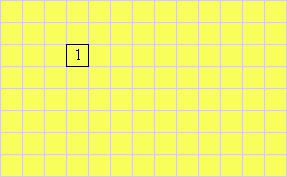
The next number in the sequence is also a 1, so we will add another 1x1 square next to our first square.

The next number in the sequence is 2, so we will add a 2x2 square where it fits alongside our first 2 squares.
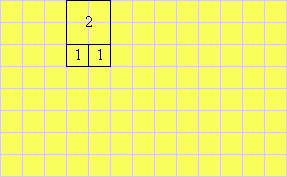
The next number in the sequence is 3, so we will add a 3x3 square where it fits alongside our first 3 squares.

The next number in the sequence is 5, so we will add a 5x5 square where it fits alongside our first 4 squares.
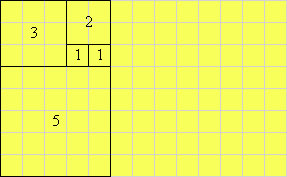
The next number in the sequence is 8, so we will add an 8x8 square where it fits alongside our first 5 squares.
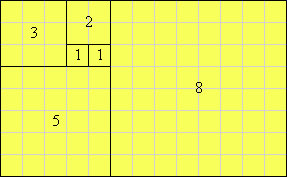
We will stop there. Do you see the spiral?

That "golden spiral" is sometimes called God's finger print because it is found throughout creation.


Every living thing contains the golden spiral at the molecular level in the form of DNA. The golden spiral is also found at the galactic level.
There are spirals in a daisy blossom. Sunflower florets make perfect spirals of 55, 34 and 21 which are all numbers contained within the Fibonacci sequence.


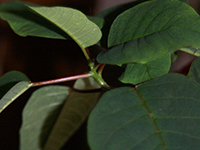
This bean plant is spiraling out of its seed. Take a look at how these leaves are unfolding in a spiral shape as they grow. This close-up of a house plant stem shows how each leaf is connected to the main stem in a spiraling pattern from the bottom of the stem to the top. No two leaves connect exactly opposite each other. The plant world is a great place to find spirals in nature. Many flower petals spiral out from the center. Many tree leaves also spiral out from the center of the stem. Pine needles spiral outward from the stem as well. However, these spirals are not limited to plants.




The garden snail displays its spiral very clearly. Each breed of chicken has layers of feathers that form an outwardly spreading spiral or whirl shape starting at the head and getting progressively larger as it spirals towards the tail. This is more obvious on some breeds than others. The golden spiral is often visible on animals as a whirl in their fur. The spiral is evident on cows and horses near the center of their forehead. One might think that this is just a fluke, and perhaps nature needs to have a whirl on the forehead of each animal because of the way fur lays. This is not the case. Many animals do not have a whirl in their fur on their forehead. Many dogs do not have a whirl on their forehead but do have one on their throat. The spiral may be located on the top of the head as seen in this image of a goat.
We have seen this spiral in plants and animals, but what about us humans? Yes we display this spiral also.


God signs us while we are yet in the womb. We curl up into a fetal position which is a spiral shape showing that we are God's creation before we are born. That is only the beginning. We are signed on the top of our head in our hair pattern. We also find the spiral in our outer and our inner ear. Perhaps this is a clue to listen to the word of God. This golden spiral, or finger print of God, or signature of God or whatever we choose to call it exists everywhere. Perhaps, God has used this method to sign His work, His creation, us. God has signed you and me, and all creation. I saw God's signature on the head of a child with a summer bur hair cut two rows in front of me in church yesterday. I am certain that God sees his mark on us every time we bow our head to pray. Take a walk outside and see how many spirals you can find. Take some pictures and share them with other readers on the Godmadeus.com facebook page at https://www.facebook.com/godmadeusall.




